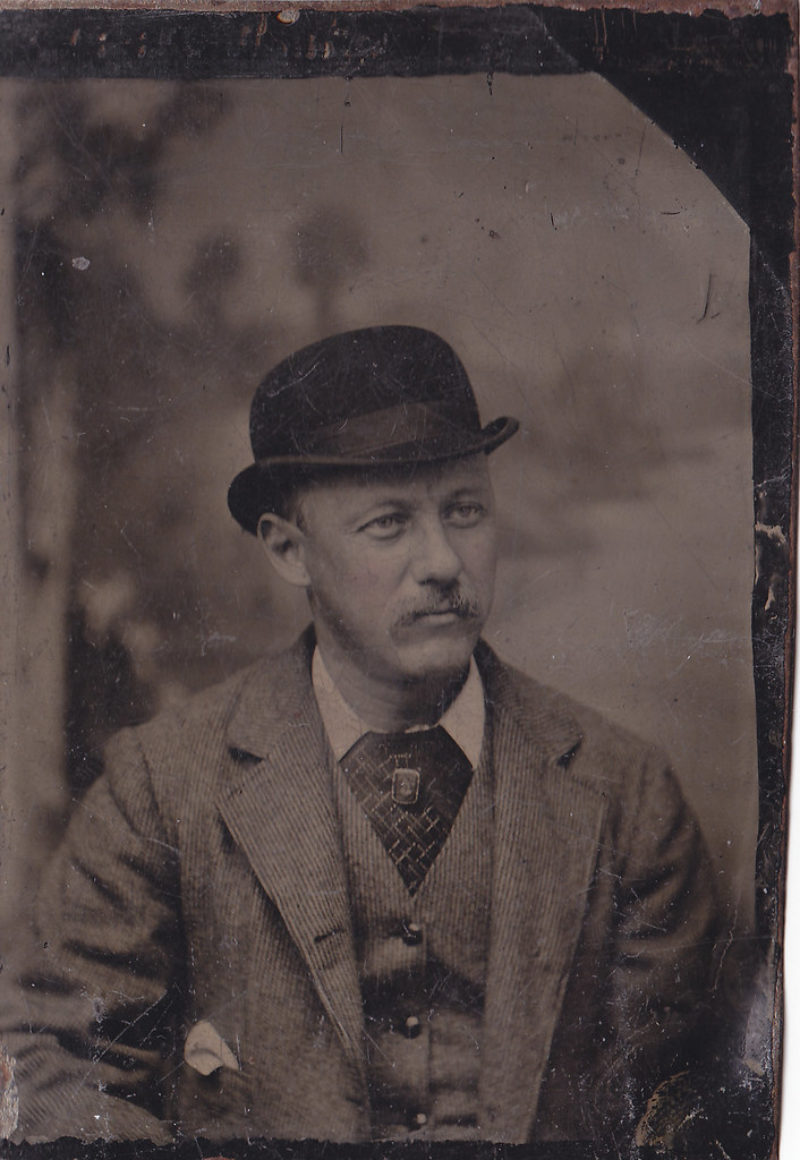
#AskAConservator: How to preserve tintypes?

"Tintype" by kschlot1 is licensed under CC BY-SA 2.0
CAPC is participating in #AskAConservator Day! Robert asks: How do you recommend safely conserving and exhibiting tin type photographs?
Great question! We have two answers for you.
Fiona Graham says:
The two main vulnerabilities of tin type photographs are deformation of the thin metal support during handling or storage, and corrosion of the metal components due to high relative humidity. Avoid keeping tin types in damp environments. If you can store or display them in an enclosure with a relative humidity between 30% and 50%, that would be great. Loose tin types can be stored in four-flap envelopes made of paper that has passed the Photographic Activity Test, in polyester sleeves (if they are in good condition) or in custom-made window-matts. The latter can also be used for display purposes. Tin types in original cases can be stored in individual, custom-fit document boxes. Tin types are usually exhibited in display cases for security reasons, and to provide protection from dust and other pollutants. Always wear gloves (nitrile or clean white cotton) when handling tin types to prevent the oils and salts on your hands from corroding the metal or damaging the image layer. You can use a clean soft brush to remove dust from the tin type. For more information, consult CCI Note 16/1 - Care of Encased Photographic Images
Jennifer Robertson answers:
First of all, like any photographic artifact, a tintype should be stored in acid-free materials that pass the Photographic Activity Test (or P.A.T.) Photographs sometimes react differently to acidic or alkaline environments than other archival documents do, so it's important to makes sure your storage materials meet standards specifically for photographs. Most archival suppliers will note this standard on their products page.
When handling a tintype or other type of photograph, make sure your hands are clean and dry, and consider wearing nitrile gloves; oils from your fingers can cause chemical damage to photographic surfaces. A tintype may be stored in an acid-free paper folder or envelope, or wrapped in acid-free tissue and placed in a storage box. It's best to keep it lying flat.
For display, the tintype should be supported evenly on a mount or lie flat. Light levels should be kept as low as possible, and the duration of the exposure should be limited. It's best to exhibit sensitive materials for short periods of time, or instead create a facsimile for exhibition.
Environmental conditions for both storage and display should be in line with those recommended for most archival materials, in between 30-50% RH and 18-21 degrees Celsius, with minimal fluctuation.
I hope this has given you a starting point, and please don't hesitate to contact a conservator specializing in the treatment of photograph materials for conservation treatment for for more specific questions.
Thanks for submitting this question, Robert! You can find a conservator specializing in photographs by using CAPC's Find A Conservator tool and entering "photographs" as the specialty.
